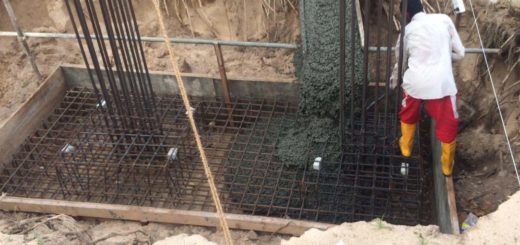Design of Strip Footings
Looking For Design of Strip Footings? Pad footings, combined footings, strip footings, inverted T type footings, Strap footings, etc. are more commonly used as shallow foundations. Depending on the ground condition different types of shallow foundations methods are used to construct structures.
Strip footings are used when the ground conditions are weak as recommended by geotechnical engineers.
There is a considerable increase in bearing area of the foundation when a strip footing is placed.
Therefore, soils with low bearing capacities, these types of footings may be used.
There are two methods that can be used to analyze the strip footings.
- Rigid analysis method
- Flexible analysis method
Rigid Analysis
Bearing pressure under the footing is assumed to be constant throughout the length and with of the footing.
Footing area = (Total Column Load) / (Allowable Bearing Pressure)
The above equation is more commonly used to find the area of the footing.
Since we know the column loads and pressure on the footing, bending and shear forces can be found with a simple analysis. This can be done with software like SAP2000, SAFF, ETAB or manual calculations.
Flexible Analysis
Soil pressure under the footing considered to be varying along the length of footing.
In actual conditions also, pressure varies along the footing creating higher soil pressure under the columns. Using software like SAP2000, SAFF, ETAB is the easiest way to do this type of analysis as hand calculations are more rigorous.
However, the area of the footing is calculated from the equation shown above which is used in rigid analyze to maintain the soil pressure under the footing within the allowable limit.
The main elements involved in this analysis are columns, footing and soil.
Column load can be added as point load to the footing and footing can be modeled with shell elements while the soil is model with springing elements. In the above mention software, by defining the sub-grade reaction, we can model the soil as spring elements.
According to Bowel’s foundations book, we can define the sub-grade reaction from the following equation for most of the cases.
Subgrade Reaction = (SF)x 40 x (Allowable Bearing Capacity)
Here, “SF” denotes the safety factor which has considered in finding the allowable bearing capacity. Generally, when the value of this factor is not available, a value in the range of 2- 3 is assumed.
Having known the column loads, assumed footing thickness and subgrade reaction, bending moments and shear forces which required to design the footing can be found.



